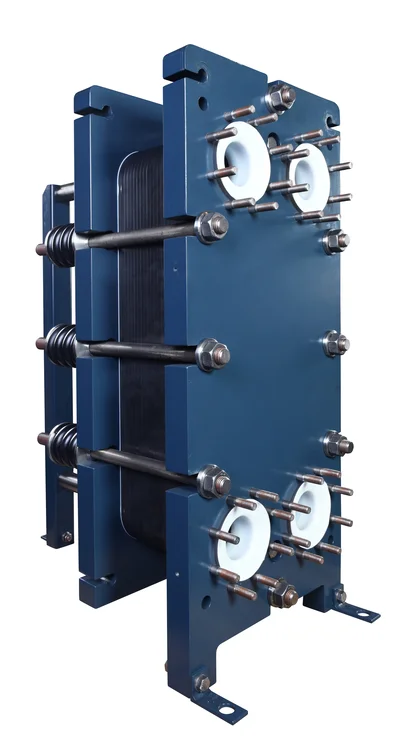Graphite Plate Heat Exchangers
Brochures
pdf - 6 MB
-
High-efficient and compact heat exchanger with a modular design
Mersen impervious graphite plate heat exchangers are designed to cool down or heat up ultra-corrosive chemicals. Safety, reliability, and performance in the long-term are our primary considerations when we size, design and manufacture our impervious graphite plate heat exchangers.
-
3 key benefits
-
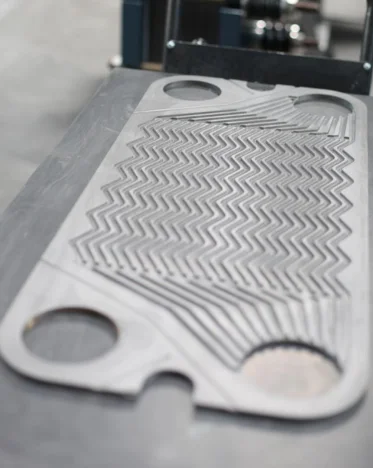
Efficiency
2 to 3 times more efficient
They are 2 to 3 times more efficient than other types of heat exchangers, making them more compact. The high turbulence within these exchangers results in very high film heat transfer coefficients.
-

Corrosion-resistance
Outstanding corrosion resistance against acid
Our extended impervious graphite plate heat exchanger portfolio enables us to provide particularly adapted solutions to ultra-corrosive heat transfers. These heat exchangers exhibit excellent corrosion resistance against acids such as HCl, HF, H2SO4, and HBr. However, they have limited resistance to oxidizers like Cl2 and H2SO4 (above 65%) and bases such as KOH and NaOH.
-

Modular Design
Extremely compact
All our impervious graphite plate heat exchangers’ designs are totally modular to best fit with individual process specification. The number and size of plates as well as the number of passes both on process and service sides can be adapted to best meet the velocities, pressure drops, and heat transfer requirements.
All our impervious graphite plates are machined after impregnation thus guaranteeing a smooth heat transfer surface and ensuring their outstanding corrosion resistance.
-
-
Focus
The essentials of the graphite plate heat exchanger
- Modular design: number of plates, size of plates and number of passes can be adjusted
- Different plate sizes: GP 25 and GP 40
- PTFE lined steel nozzles
- Thermal expansion compensation ensured by helicoidal springs
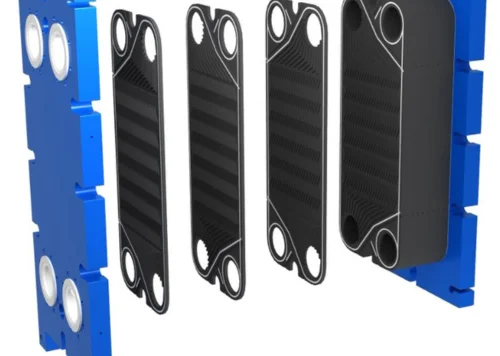
The material used for these heat exchangers is the same as that for block heat exchangers, with a high thermal conductivity of approximately 130 W/m.K.
- GAB GPX 1, GPX 1T , or GPX 2 plates
- Pressure plates and flanges: PTFE carbon steel
- Tie rods, nuts, bolts, washers, springs: stainless steel
- PTFE gaskets between the plates
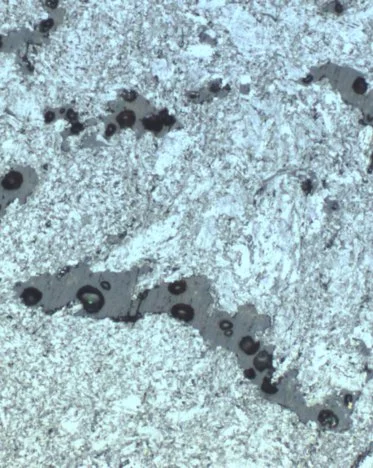
- Design pressure: up to 6 bars in standard
- Design temperature: -30°C to +200°C (-22°F to 392°F)
- Heat transfer area: up to 29m²
- Nozzle sizes: DN80 / DN100 PN16
- Design:according to European PED, ASME code on request
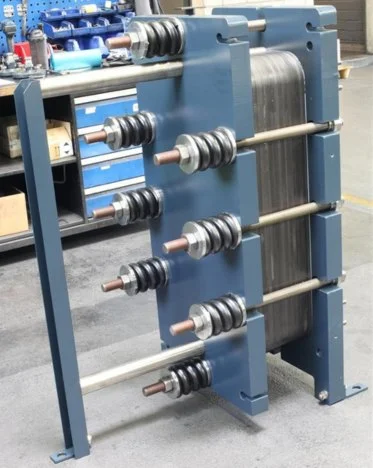
-
Applications
What are graphite plate heat exchangers used for?
The narrow channels are ideal for clean liquid-to-liquid interchange. On top of that, they operate with real counter flow, making them suitable for temperature crossing or narrow pinch applications.
The graphite plate heat exchangers are perfectly suitable for:
- Cooling and heating of ultra-corrosive chemicals
- Heat recovery between two ultra-corrosive chemicals
Industrial processes:
- Crop protection
- Fine chemicals
- Active pharmaceutical ingredients
- Fire retardants
- Flavors and fragrances
- Vitamins
- Flocculants
- Treatment, purification and concentration of spent acids
- and many more…
-
Working Principle
How does a graphite plate heat exchanger work?
Plate & frame heat exchangers are made of many 10 mm thin plates that have very large surface areas and small fluid flow channels for heat transfer. Heat is transferred by conduction through the plate's material. Plate heat exchangers work with countercurrent flows which allows lower approach temperature differences, high temperature changes, and increased efficiencies.
The thermal performance of plate heat exchangers can vary significantly. It is therefore essential to select the type and size of plate & frame heat exchanger that is the most adapted to the specific application and industrial process. There are several considerations including flow rate, pressure drop, risk of erosion, design pressure and temperature, materials compatibility, fouling, and many more that should be taken in account.
-
Our experts' answers
Why selecting a graphite plate heat exchanger ?
-
Technical Information
Graphite Plate Heat Exchanger
Brochures and Flyers
Graphite Plate Heat Exchanger-2025
pdf - 543.68 KB | June 5, 2025
The graphite plate heat exchanger is part of the Mersen range of heat exchangers resistant to corrosion and hot environments. Mersen designs and manufactures graphite cylindrical block Polybloc®, graphite shell and tube heat exchanger, cubic block heat exchanger, graphite plate and annular groove heat exchangers. We also manufacture graphite columns and graphite quenches. We propose a complete range of silicon carbide block, and shell and tube heat exchangers as well as steam jet vacuum pumps. We offer PTFE lined columns and vessels, as well as PTFE-lined steel pipes and fittings, and PTFE bellows We supply a complete range of graphite busting discs. We manufacture process equipment in reactive metals such as titanium, zirconium and nickel alloys.
